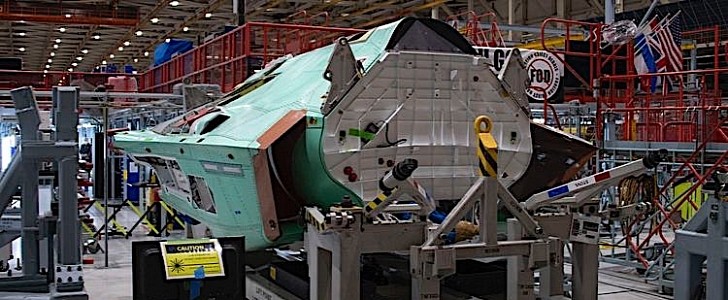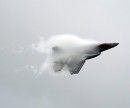Zero to 900 in about 16 years. This is how one could sum up the production history of the fifth-generation aircraft we all know (and love) as the F-35 Lightning II.
Right on Valentine’s Day, a Northrop Grumman facility rolled out the 900th center fuselage for an F-35, marking an important milestone in the history of the fighter. You can admire that small piece of an aircraft in the main photo of this piece.
The F-35 started being made back in 2006, with Lockheed Martin acting as prime contractor, but other companies, like Northrop Grumman and BAE Systems, supplying components.
The center fuselage is one of the components Northrop Grumman is producing for the airplane. Essentially the waist of the machine, it makes up for a “significant portion of the aircraft’s internal weapons bay and internal fuel capacity,” according to the company.
At the time of writing, and well into 2023, 156 airplanes of this kind are expected to roll out Lockheed Martin’s doors per year. Well under 1,000 of them are presently operational across several military branches, but plans are for thousands of them to be deployed. The U.S. Air Force (USAF) alone, for instance, plans to have a total of 1,763 F-35s, as per the last info.
But America is not the only nation fielding these incredible beasts, with some already flying them (UK, Italy, Netherlands, Turkey, Australia, Norway, Denmark, Canada, Israel, Japan, South Korea, Belgium and Poland), and others in the process of ordering their own.
For all it offers, the aircraft is, of course, not cheap. The sticker on each one reads $78 million, and the U.S. plans to spend a total of $400 billion to get its hands on around 2,500 of them over the coming years, according to the most recent data published by Forbes.
The F-35 started being made back in 2006, with Lockheed Martin acting as prime contractor, but other companies, like Northrop Grumman and BAE Systems, supplying components.
The center fuselage is one of the components Northrop Grumman is producing for the airplane. Essentially the waist of the machine, it makes up for a “significant portion of the aircraft’s internal weapons bay and internal fuel capacity,” according to the company.
At the time of writing, and well into 2023, 156 airplanes of this kind are expected to roll out Lockheed Martin’s doors per year. Well under 1,000 of them are presently operational across several military branches, but plans are for thousands of them to be deployed. The U.S. Air Force (USAF) alone, for instance, plans to have a total of 1,763 F-35s, as per the last info.
But America is not the only nation fielding these incredible beasts, with some already flying them (UK, Italy, Netherlands, Turkey, Australia, Norway, Denmark, Canada, Israel, Japan, South Korea, Belgium and Poland), and others in the process of ordering their own.
For all it offers, the aircraft is, of course, not cheap. The sticker on each one reads $78 million, and the U.S. plans to spend a total of $400 billion to get its hands on around 2,500 of them over the coming years, according to the most recent data published by Forbes.













